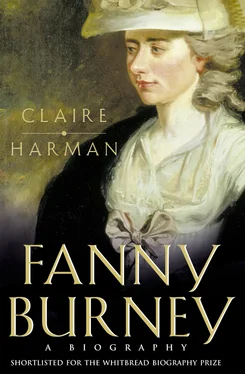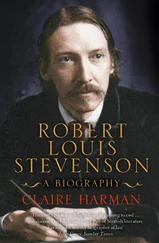1 ...6 7 8 10 11 12 ...31 But however popular he was in Lynn, Charles Burney never intended to stay there very long, and the children must have got used to their parents talking about London as if it were their real home. Burney made a couple of attempts to leave during the 1750s, but his obligations (and some strategic salary hikes) kept him in place. His noble patrons made him feel valued and full of potential; Lord Orford was particularly generous, and allowed the musician the run of his library at Houghton. Burney would get the key from the housekeeper and wander around when the master was absent, no doubt fostering fantasies of one day possessing such a library and such a lifestyle himself. Early on in his Norfolk days, Burney had bought a mare called Peggy on which to travel the long distances from Lynn to his aristocratic and county clients, and typically he made use of the time spent on horseback (she was obviously a very trustworthy animal) teaching himself Italian from the classic authors, with a home-made Italian dictionary in his pocket. He bore all the marks of a man in training for something greater. His mind was turning to literary schemes, and perhaps it was as early as in these years that Burney first conceived his plan to write a history of music, something monumental in the style of Diderot’s Encyclopédie or Samuel Johnson’s new Dictionary of the English Language , to which he was also a subscriber. He kept himself in touch with the musical and intellectual life of London by going to town every winter. He hardly needed the urgent advice of his friend Samuel Crisp, whom he had met through the Grevilles:
is not settling at Lynn, planting your youth, genius, hopes, fortunes, &c., against a north wall? […] In all professions, do you not see every thing that has the least pretence to genius, fly up to the capital – the centre of riches, luxury, taste, pride, extravagance, – all that ingenuity is to fatten upon? Take, then, your spare person, your pretty mate, and your brats, to that propitious mart, and, ‘Seize the glorious, golden opportunity,’ while yet you have youth, spirits, and vigour to give fair play to your abilities, for placing them and yourself in a proper point of view. 50
By 1760, Burney felt he had fulfilled his obligations to the ‘foggy aldermen’ of Lynn Regis. He decided to move his growing family back to London, ostensibly to further their chances in life, but more immediately to further his own. James, an easy-going boy who had not shone at school, was not to accompany them. It was agreed that he should join the navy, and he was signed up as Captain’s Servant on board the Princess Amelia . This was a recognised way for poorer boys to get some rudimentary officers’ training, but it was also an abrupt and dangerous introduction to adult life for a ten-year-old, and one wonders why his parents submitted him to it. Perhaps their ignorance of seafaring was as great as their backgrounds suggest. The Princess Amelia was a man-of-war, a huge floating artillery, with eighty cannon and 750 men on board, a far cry from the fishing boats and merchantmen James might have watched sailing up the Great Ouse. The Seven Years’ War was at its height, and the Princess Amelia was on active service: the year James joined the crew, it formed part of Hawke’s squadron in the Bay of Biscay and was almost blown up by French fireships in the Basque Roads the following year. News from the war took a long time to reach England, and the Burneys would have had little idea of the danger their son was in until it was well past. James’s career would keep him out of family life all through his formative years, and, not surprisingly, his own later behaviour as a family man was eccentric, to say the least. The violent contrasts between home life and the sea must have made the former seem vaguely surreal to him; he didn’t let one impinge on the other, and it is doubtful that his family ever understood the privations or excitements of his day-to-day existence.
The Burney family made their momentous move to London in September or early October 1760, to a house on Poland Street in Soho, a significantly better address than Charles Burney’s last one in the City. Soho, which had been very sparsely inhabited up to the sixteenth century but heavily developed by speculators after the Great Fire, was new and fashionable. The elegant squares and streets that spread their gridwork across the fields, the former military yard and around the old windmill * contained rows of houses quite different from the ‘Cottages … Shedds or meane habitacons’ that had straggled there as recently as 1650. 51 Poland Street had been begun in 1689 and named, topically, in honour of John Sobieski’s intervention against the Turks at the siege of Vienna. It wasn’t one of the best addresses in the area – Leicester Fields, Golden Square and King’s (later Soho) Square had far more aristocratic associations – but it was a very respectable one for an ambitious music-teacher. Soho was full of middle-class families providing services to the rich: Huguenot craftsmen and jewellers, German instrument-makers, gun-makers, portrait-painters, wine merchants, watchmakers, architects and medical men. Next door to the Burneys was a hair-merchant who made wigs for the legal profession, a specialised business with dignified associations. The children of the two households played together in the little paved yards behind the properties.
By the time Fanny Burney was writing the Memoirs in the late 1820s, she was aware that her readers might be unimpressed by the family’s former address, ‘which was not then, as it is now, a sort of street that, like the rest of its neighbourhood, appears to be left in the lurch’. 52 She stressed how genteel Poland Street had been in the 1760s, when the Burneys had lords, knights and even a disinherited Scottish Earl for neighbours, and exotic visitors such as a Red Indian Cherokee chief who was staying in a building almost opposite number 50 and whom the Burney children watched come and go with awed delight.
The contrast with Lynn was dramatic, the scope for entertainment and amazement seemingly endless. Though there were still fields and allotments a stone’s throw away in the undeveloped land to the north of Oxford Road (now Oxford Street), London was full of shows and spectacles guaranteed to impress young children straight from the provinces. The theatre at Drury Lane was well known to them through their father’s long association there with Arne and his friendship with Garrick; they also knew the rival theatre at Covent Garden and the splendid opera house in the Haymarket, which had room for three thousand spectators (about a third of the population of Lynn Regis). London was filling up with teahouses, coffee houses, strange miniature spas, assembly rooms, puppet shows and curiosity museums to cater for the leisure hours of the rapidly expanding metropolitan population.
The Burney children were too young to attend the famous pleasure gardens at Vauxhall and Ranelagh, Bagnigge Wells or Marylebone, but they could admire the fashion-conscious crowds strutting and posing in Pall Mall and St James’s Park, or the guests, magnificently dressed for masquerades and balls, arriving by carriage or chair outside Mrs Corneley’s assembly rooms in Soho Square. When Fanny was writing her novel Evelina a decade and a half later, the remembered excitement of her own arrival in London made all the difference to her treatment of a familiar fictional device. The first impressions of a fresh-faced country heroine had been used by Defoe, Richardson, Fielding, even Cleland (unlikely though it is that Fanny Burney ever read Fanny Hill ), to provide a sardonic commentary on the London social scene, but Burney knew it from life as well as from fiction. Evelina’s breathless letters to her guardian, Mr Villars, catch the childish beguilement of the author herself experiencing the bustling, brightly-coloured, noisy, smelly and dangerous life of the capital for the first time when she arrived there in 1760, an open-minded, open-eyed and open-mouthed eight-year-old.
Читать дальше












